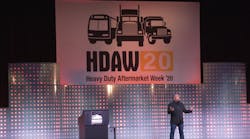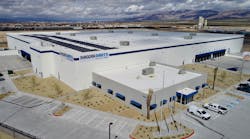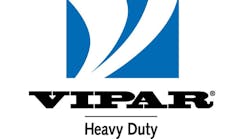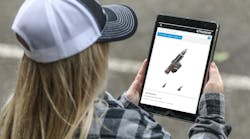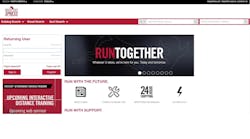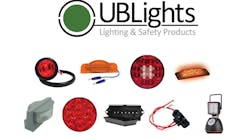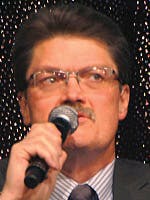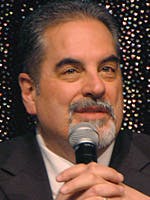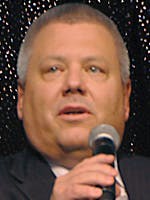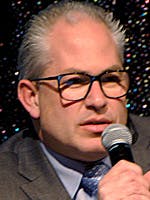In the past six years, the OE dealer has gained a 4% share in the Class 6-8 aftermarket, going from 45% to 49%, while the independent garage has lost 3%, going from 12% to 9%, and HD distributors have gained 1%, going from 18% to 19%.
There is expanded competition with O’Reilly Auto Parts and NAPA Auto Parts, along with Amazon, eBay and other e-commerce avenues.
With independent distributors losing share and OE dealers gaining share, organizers of HDAD assembled a diverse panel to look at what’s happening.
Q: Where do you see the trends headed?
Davis: If you look at the trucking industry, I think some of the most exciting trends are deeper integration around powertrain and vehicle systems. It’s been mentioned a few times today about technical advancements and just where we’re headed. It has big implications on the future of the aftermarket. If you take powertrain integration, for example, we’re getting much richer controls between the engine controller, transmission controller, ABS controller and so on, and as more and more features and capabilities are introduced to the marketplace—like predictive shift or even in the future with autonomous capabilities at different levels—that integration on the repair side is going to be absolutely critical. So making sure that the products and replacement parts are of high quality and making sure diagnostic tools and all of emerging capabilities like telematics are in place is going to be important to the OEM channel, but that’s going to be a big transition that the independents’ base will witness in terms of capabilities with technician training, service tools, and just some of the shop equipment.
Haug: There definitely is a lot of complexity that has been added to our industry in the last five years. We’ve taken the low-hanging fruit. Now we need more efficiency built into our equipment, and we need more technology. Not only for the operation of the truck, but to assist the driver. We need a lot of training for our technicians and users of our equipment, especially drivers. I see more driver-assist items. I see not only in the operation of the truck and performance of the truck, but just for the driver. One of the biggest things I see coming is electrification of our units. We have a huge need for our drivers and the amenities that drivers demand. They want power in their trucks. We have a gender gap coming at us. There are a lot of challenges going forward.
Long: I think the biggest opportunity coming at us right now is the use of telematics to actually do the driver’s job for him. What I mean is that at the end of the day, he’s required to do a write-up of that truck. That doesn’t always happen but we have the ability to go through the gateway in the telematics on the truck with our satellite system and get that information sent to us in a number of ways. We can get it sent directly to the terminal manager. We can go back and see where that driver has been and what he has been doing. We can see if he’s using cruise control or not. We’re just scratching the very tip of the iceberg. Over the next few years, you look at autonomous vehicles and platooning—that’s going to be another complexity for our guys to work on. We have to make sure we’re getting prepared for that. The technology of engines and operating conditions … they’re going to be faced with higher temperatures and increased combustion in summers. It’s going to be a challenge for us technologically to stay ahead of the game.
Mejaly: Technology is changing our life at a rate we’ve never seen before. Whether that’s usage of our iPhones every day for the service providers that are linking up to us for their value proposition or the speed with which vehicles can be driven or utilized, it wasn’t long ago that autonomous-drive vehicles were a thought process and now they’re on the road today. EV vehicles weren’t getting a lot of extended miles. Now they’re getting over 200 miles on a charge. So our model is changing. When I look at the market share Tim showed, the 49% was quite alarming to me. And I think part of that is some of the good work of private brands. But I also think technology is a challenge. It’s something that will bring you an advantage for a while, but an entrepreneur comes up with ideas. And I think that the marketplace is adjusting. They’re looking to try to understand the algorithms to diagnose the problem. That’s some of the challenges of the channel—the speed and change with which technology is driving it. I will tell you that the OEMs are not slowing down. It’s really a challenge on the independent side to be more entrepreneurial and think of those ways from a technical perspective to catch up.
Sherbourne: We’re all talking about technology. You read every article of fleet parts and whatever magazine you’re looking at, and from an aftermarket perspective, I don’t think our aftermarket distributors are adapting quickly enough. I’m looking at it from the standpoint from no matter what the OEMs put on a truck, there is going to be training involved. We have to get up to speed. Even though we don’t sell that part, we have to make sure our independent side is trained well enough. The other thing is, if that does not happen, what happens to the second owner? The second owner doesn’t want that autonomous vehicle. He doesn’t want all the technology that’s being built on there because of all the cost. So how do we get the trucks that are being put out there from the OEM perspective, with all the technology on it, down to the second and third owner? That’s my biggest concern. It goes back to training. But I’m also looking at it from a parts perspective. Talking to fleet guys, how are they buying? Are they using the iPads and phones to buy parts? I was surprised by the answers I received. They are. They’re buying through the Internet. So from an aftermarket perspective, are we thinking two-step distribution? Not to say we cut out the distributor, but we have to give access to that on the Internet and have parts available on the Internet.
Wolma: The electronics and ease of doing business is critically important because the population that’s coming into the world today is not going to use paper catalogs. In my career, I believe paper catalogs will come to an end. An e-catalog and e-commerce type of solution will be what everybody is using. Millennials want to Google for everything and want an answer immediately. So we’ve got to be ready for that and capable of addressing that market or we will lose share. We have to keep an eye on the fact that there’s a recognition that over half of the revenue that’s in the aftermarket today is actually on the service side. It’s actually on the wrench turn. I really do see a continued consolidation, especially on the service side as people recognize it’s a big piece of revenue. ♦

